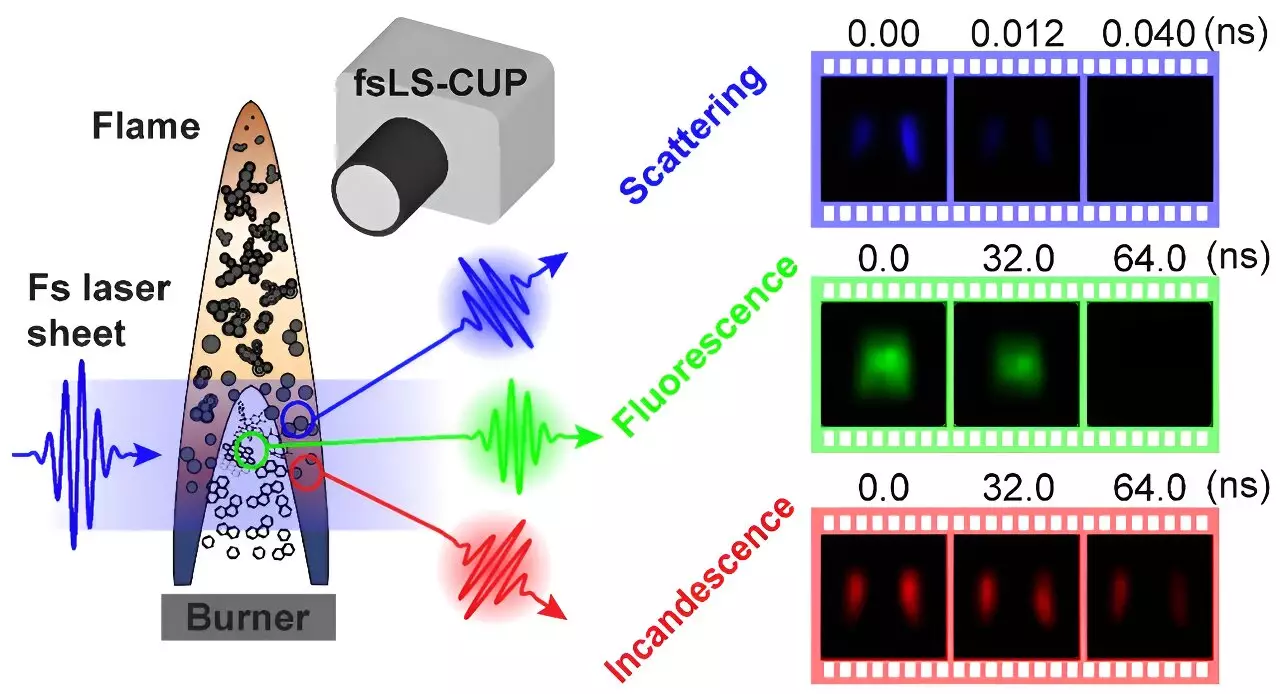In the realms of combustion science and electronic innovation, the quest for understanding and visualizing transient phenomena at an atomic level has always been a challenge. Recent advancements, particularly in ultrafast imaging technology, are paving the way for unprecedented insights into how soot particles and polycyclic aromatic hydrocarbons (PAHs) behave in different environments, shedding light on their implications for human health, environmental sustainability, and even astrophysics.
Soot particles and PAHs are not mere byproducts of combustion; they are integral to various chemical processes, both on Earth and in outer space. Generated by common sources such as candle flames and airplane engines, these substances pose significant health risks due to their carcinogenic properties. Moreover, in the grand expanse of the universe, carbon-based compounds like PAHs comprise about 10-12% of interstellar matter, indicating their relevance not just locally but cosmically.
The challenge lies in their ephemeral nature; the signals emitted by these particles last only a fraction of a second, necessitating advanced imaging capabilities. Conventional imaging techniques, which can record a few million frames per second, often miss the rapid dynamics of these processes, limiting our ability to study them effectively.
A groundbreaking solution proposed by researchers from the California Institute of Technology and Friedrich-Alexander University Erlangen is the femtosecond laser sheet-compressed ultrafast photography (fsLS-CUP). This innovative technique stands out as the fastest single-shot planar imaging camera, surpassing existing technologies by a staggering margin. Capable of capturing 250 billion frames per second, fsLS-CUP significantly enhances our ability to observe and record the fleeting events associated with the combustion of PAHs and soot.
At the heart of this technology is the use of a single femtosecond laser pulse, offering wide-field, real-time imaging capabilities. This advancement allows scientists to monitor laser-induced fluorescence from PAHs, thermal effects from soot, and interaction data all in one go. This process of capturing these rapid occurrences in a single shot alleviates some of the drawbacks traditional methods face, such as alignment issues and the thermal complications resulting from multiple laser pulses.
The ramifications of fsLS-CUP extend beyond merely improving combustion studies. The unprecedented speed and precision of this imaging method enable researchers to capture fundamental phenomena in various scientific domains, including chemistry, biology, medicine, and energy. The research conducted by this team showcases its robust potential in understanding hydrocarbon formation and the dynamics of nanoparticle evolution in flames.
As Dr. Yogeshwar Nath Mishra notes, the combination of femtosecond laser technology with advanced imaging techniques has opened new avenues in understanding rapid chemical reactions. The movement towards a two-dimensional imaging method is particularly beneficial for comprehensively visualizing and analyzing rapid processes that were previously too swift to document effectively.
Further emphasizing the importance of fsLS-CUP, Dr. Peng Wang remarked on its potential to aid in accessing rapid phenomena crucial to natural science and technology. This technique is not merely a technological advancement; it represents a significant shift in how we approach scientific exploration of high-speed phenomena. As researchers continue to refine the technique’s speed and spatial resolution, we can anticipate breakthroughs that could revolutionize various fields, including materials science and environmental studies.
Specific applications are evident in studying PAHs in unique environments, such as the atmospheres of carbon-rich stars, which provide ideal conditions for PAH formation. Understanding these processes not only enhances our knowledge of life-sustaining compounds in space but also contributes to a broader understanding of chemical kinetics.
The introduction of fsLS-CUP marks a significant milestone in ultrafast imaging technology, offering a new lens through which we can observe the intricate behaviors of soot and PAHs both on Earth and in the cosmos. By grasping these rapid phenomena, scientists unlock critical information that bridges multiple disciplines—from environmental science to astrochemistry—enhancing our understanding of the universe’s fundamental processes. As innovation continues to merge with scientific inquiry, the future promises expansive exploration and deeper insight into the chemical intricacies of life and the universe itself.


Leave a Reply